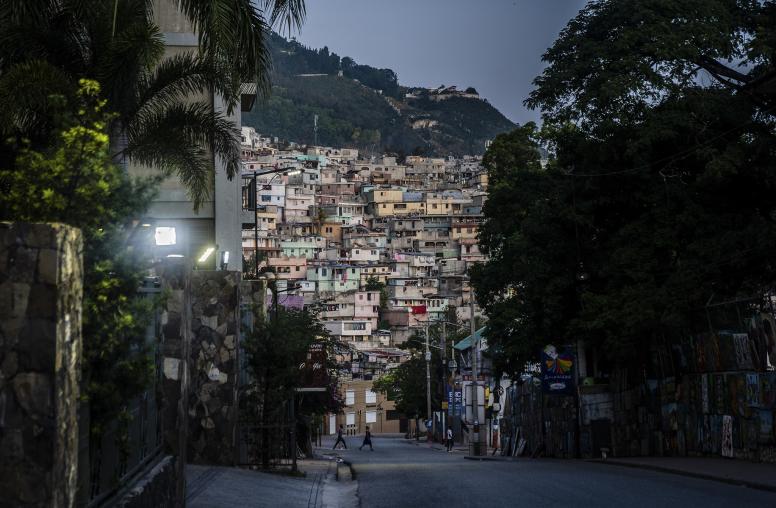Peacekeeping without Guns
Experts on nonviolent peacekeeping presented their methodologies, lessons learned, and the way forward for the innovative field at the U.S. Institute of Peace (USIP) on March 21, 2012.

Experts on nonviolent peacekeeping presented their methodologies, lessons learned, and the way forward for the innovative field at the U.S. Institute of Peace (USIP) on March 21, 2012. Representatives from Peace Brigades International and Nonviolence Peaceforce, two leaders in unarmed civilian protection, described how they provide “protective accompaniment” for human rights advocates in conflict zones, build local capacity for conflict resolution and raise awareness of organized violence at local, national and international levels.
Jit Man Basnet, a Nepalese human rights lawyer, opened the event by telling his harrowing story of persecution first by Maoist insurgents and later by rural Nepal army units. Turned away by the police and human rights organizations when he sought their protection, the United Nations eventually directed him to the Nepal office of Peace Brigades International (PBI). Accompanied by PBI staff since 2008, Basnet has been able to continue his human rights advocacy work.
Katherine Hughes-Fraitekh, executive director of PBI, stressed that one of the key benefits of unarmed peacekeeping is that it “provides a firewall” between local human rights groups and armed parties to a conflict, giving them space to work and increase their own effectiveness. PBI uses its local networks and connections to national, regional and international actors to monitor and raise awareness of conflicts and deter persecution of activists, she said. Established in 1981, PBI is currently active in Mexico, Guatemala, Colombia and Nepal.
Tim Wallis, Tiffany Easthorn and Atif Hameed represented Nonviolence Peaceforce (NP) on the panel. Wallis, executive director of NP, emphasized the importance of building relationships at the community level, sometimes with staff living in the affected communities for extended periods. “So much of what’s happening in these contexts is people panicking, or responding to rumor or propaganda – to be able to know what’s happening in the group, enabling reasoned judgments, is a critical role that we play,” he said. Established a decade ago with support from a USIP grant, NP’s two largest projects today are in South Sudan and Mindanao in the Philippines.
All of the panelists agreed on the importance of maintaining strict nonpartisanship, engaging all stakeholders, building local capacity for conflict resolution and providing unarmed peacekeepers with intense training and continuous psychological support. The unarmed peacekeeping model works best when interventions are based on strong relationships and sound preliminary analysis, they said.
When asked if the model could work in Syria, Wallis replied: “The problem with a situation like Syria now is that we don’t have the relationships built” to be effective, including permission from the Syrian government. “The conditions have to be right, and we have to have time to be able to do that,” he said.
David Smock, senior vice president of USIP’s Center of Innovation and Religion and Peacemaking Center, moderated the conversation.
In addition to supporting the innovative techniques of organizations like PBI and NP through its grants, USIP promotes nonviolent conflict resolution by building networks of trained facilitators in conflict zones, and by training peacekeepers in ways to understand conflicts and resolve them peacefully, communicate effectively with people who have been traumatized by years of violence, and protect civilians during times of war.


